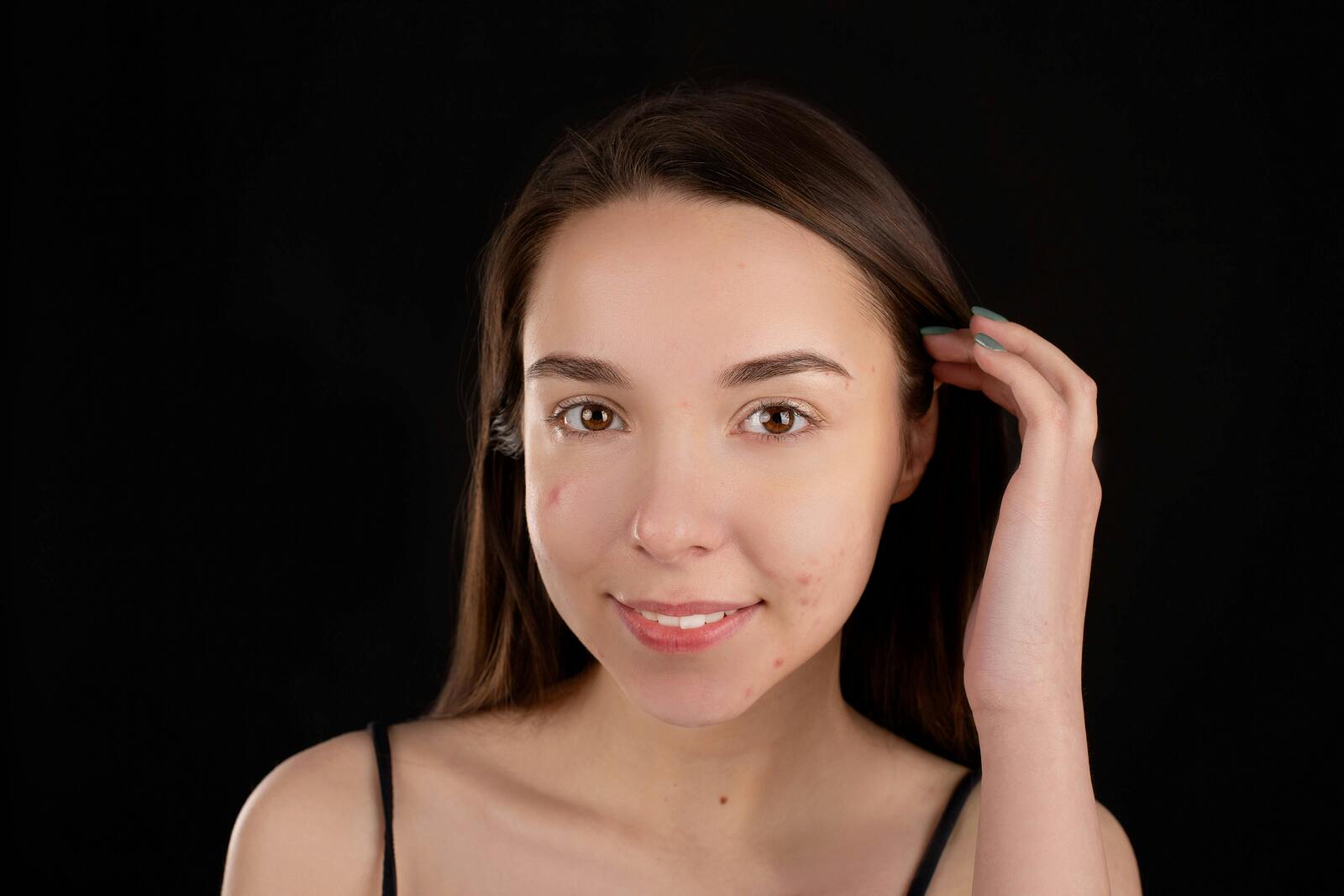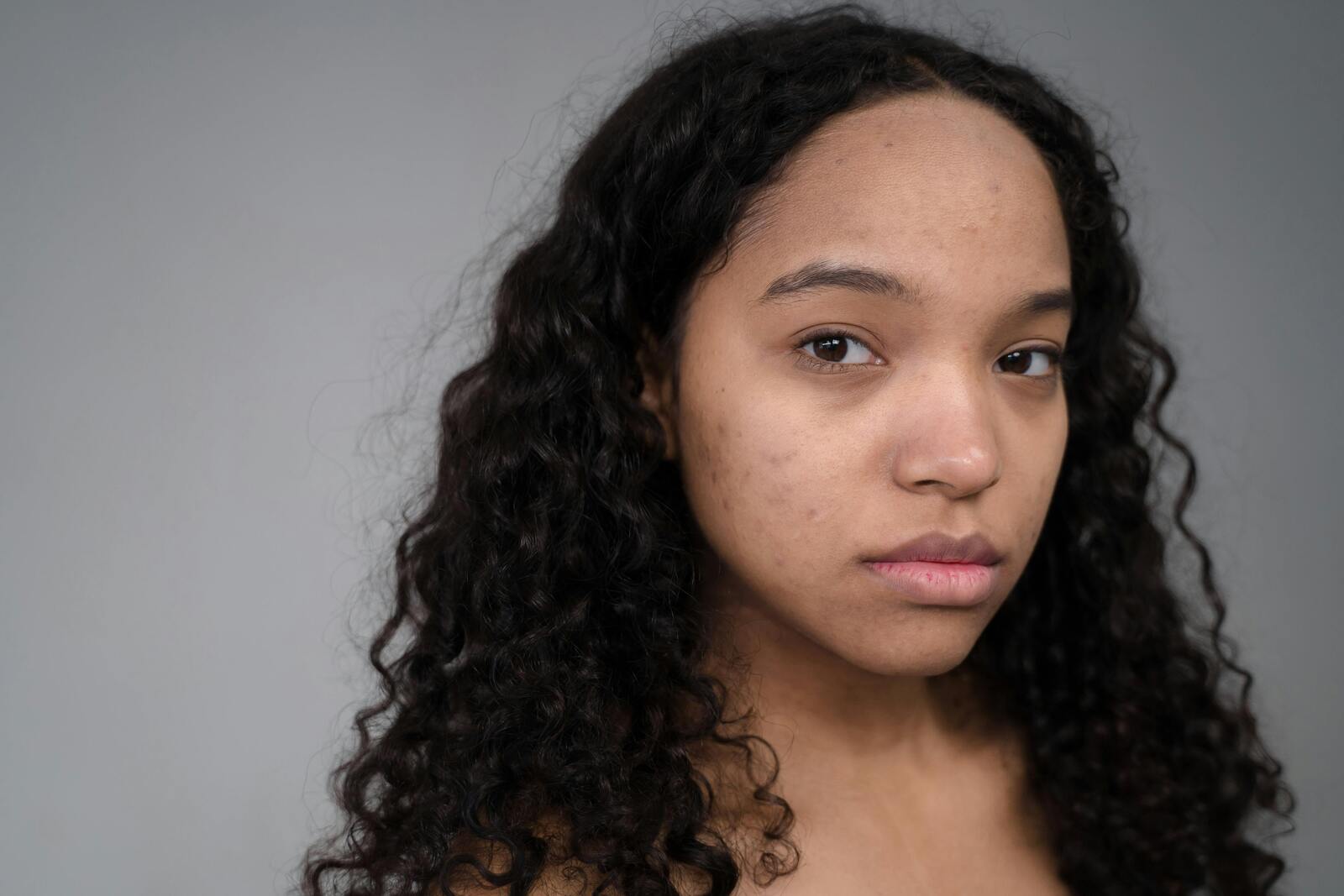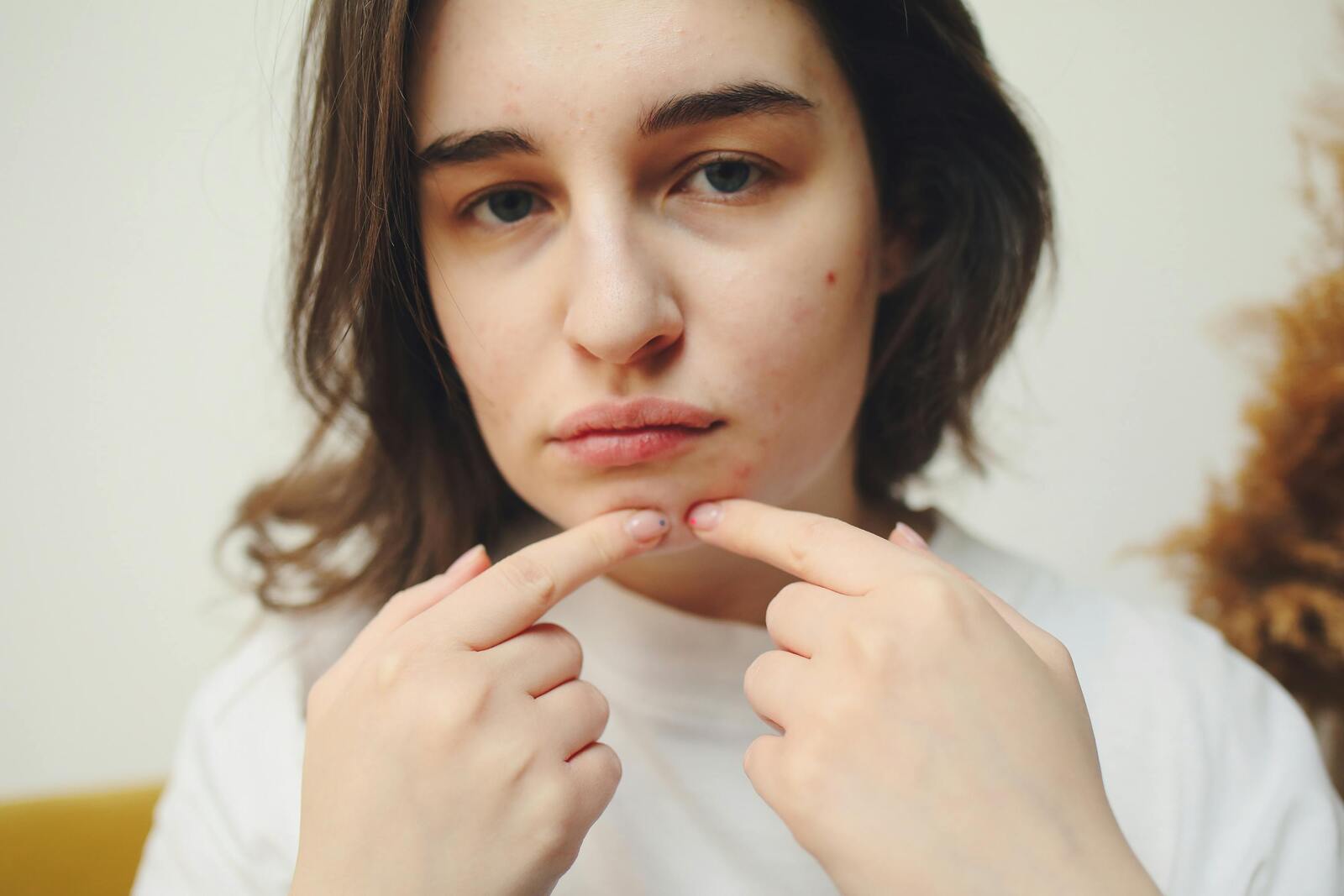
Understanding Acne Face Map and Natural Remedies
By Sadia | Wednesday, May 21, 2025
Have you ever noticed that your pimples seem to spawn in the same spots as your previous ones? No, you weren’t imagining it. Moreover, there’s even a whole concept behind it called acne face map. This ancient technique connects specific breakout points to possible internal health issues, which can help you understand what your skin might be trying to tell you.
Plus, when you have a better understanding of these connections, you can have a more personalized approach to managing your acne and overall wellness. Since acne face mapping splits your face into zones, each portraying different organs or lifestyle factors.
For instance, persistent breakouts on your forehead and nose might be tied to stress, dietary issues, or bad sleeping habits. Whereas acne on the chin and jawline usually points to a hormonal imbalance. Although these practices can’t replace professional diagnostics, acne face mapping can provide helpful insight that can aid in your skincare routine and lifestyle choices to achieve clear, healthy, glowing skin.
Acne Location and What It Means
Forehead and Nose (T-Zone)
The forehead and nose, collectively known as the T-zone, are one of the most common areas on your face to have blackheads and whiteheads since they have larger pores and more sebaceous glands compared to other regions of your face. These glands are responsible for producing sebum, which is an oily substance that moisturizes your skin but can clog pores if too much of this substance is produced. This alone makes the T-zone extremely vulnerable to acne face map breakouts like blackheads, whiteheads, pimples, etc.
These breakouts in the T-zone can be linked to different lifestyle characteristics. For instance, stress can raise oil production, while a poor diet, particularly one with high sugar, can cause you to have inflammation, which can worsen your acne. Plus, irregular sleep patterns can also disrupt hormone balance and skin repair, leading to persistent acne in the area. The biggest reason behind this is that the forehead and nose are touched more often, causing bacteria to easily transfer and infect clogged pores and produce breakouts.
Similarly, the unique anatomy of the T-zone, with its high concentration of oil glands, creates the perfect storm for acne face map issues. When the extra oil mixes with your dead cells and bacteria, it can clog your pores and cause inflammation. This also explains why some areas of your face are always clear, whereas the T-zone stays oily and prone to breakouts.
If you want to manage your T-zone acne, you will need to start by gently cleansing the area to remove all the excess oil without harming the skin, and use targeted treatment such as salicylic acid or benzoyl peroxide to unclog pores and reduce bacteria. When you understand the reasons linked to your acne face map area, you can adopt and make better choices to keep your skin balanced and clear.
Chin and Jawline
Similarly to the T-zone, the chin and jawline are common trouble spots for the acne face map, and are usually linked to hormonal fluctuation. A lot of individuals notice breakouts in this area around their menstrual cycle or during times of hormonal imbalance, i.e., puberty or stress. These changes can cause your skin's oil glands to build more sebum, resulting in clogged pores and breakouts.
Furthermore, acne on the chin and jawline is often deeper and more inflamed in contrast to other areas. These cystic or nodular pimples tend to be painful and stubborn, usually taking longer to heal. Since these types of acne are driven by hormones, they can be more challenging to treat, especially with common over-the-counter products.
Knowing the connection between your chin and jawline breakouts, as well as your hormones, is necessary to manage these types of acne. Treatments that handle hormonal fluctuation, like particular birth control pills or prescription medications, can help you reduce these stubborn breakouts. Also, practicing gentle skincare that can calm inflammation and prevent clogged pores further improves this preventive care.
Suppose you have been experiencing continuous deep, inflamed acne in this area. Then it might be a good idea to listen to your body signals and visit a healthcare professional for advice. Just acknowledging the hormonal source causing your facial acne can lead to clearer, healthier skin over time.

Treatment Options Based on Acne Location
Forehead and Nose
Salicylic Acid
This is the go-to ingredient for acne face map breakouts on your forehead and nose. This beta hydroxy acid gently scrubs your skin, penetrating deeply into the pores to dissolve the extra oil and dead skin cells that are clogging them.
Routinely using these can help prevent blackheads and whiteheads, which are the most common types of acne in the T-zone. Additionally, salicylic acid also has anti-inflammatory properties, which can help soothe irritated skin and reduce redness. Introducing a salicylic acid cleanser or treatment into your skincare routine can actually help you manage acne face map breakouts in these oily areas. Thus allowing you to keep your pores clear and your skin balanced.
Benzoyl Peroxide
Like salicylic acid, this is another powerful option for treating your acne face map breakouts on the forehead and nose. This medication works by killing the bacteria that flourish in clogged pores, reducing inflammation, and preventing any new pimples from forming.
Benzoyl peroxide is particularly handy for inflamed acne and can be seen in cleansers, gels, and spot treatments. Although very effective, this medication can sometimes result in dryness or irritation, so it's best that you start with a lower concentration while also moisturizing during the process.
Retinoid Therapy
One of the most effective treatments for acne face map issues on the forehead and nose, as they stimulate faster cell turnover. It provokes the skin to shed dead cells much faster, and prevents clogged pores, which play a big role in causing blackheads and whiteheads in the T-zone.
Moreover, they encourage collagen production, which improves your skin texture and reduces acne scars over time. Retinoids can be easily found in prescription or over-the-counter medications, but they might cause dryness or sensitivity. With continuous use, retinoid therapy can help transform your skin while keeping the acne face map breakouts under control.
Chin and Jawline
Hormonal Therapies
Hormonal Therapies, particularly combination birth control pills, have estrogen and progestin, which are commonly prescribed to regulate hormonal changes that result in acne face map breakouts on your chin and jawline. These pills work by lowering your androgen levels, like testosterone, which can help in reducing oil production in the skin and help prevent clogged pores and inflammation. It can take up to three months for you to actually see noticeable improvements.
However, depending on the individual and their medication history, progestin pills might worsen your acne. This is why it is vital to contact your healthcare provider before taking any medication, so that you can find the ideal option for your treatment. These hormonal therapies can be especially effective for women who have acne because of their menstrual cycle or hormonal imbalance.
Topical Treatments
Topical treatments can be really helpful in managing your acne, face map breakouts on the chin and jawline, since they can reduce inflammation and prevent pores from clogging. Ingredients like benzoyl peroxide and salicylic acid can help kill acne caused by dead skin cells and bacteria, while cleaning your pores. Whereas, anti-inflammatory ingredients like niacinamide or topical antibiotics can help soothe the redness and swelling.
Using these treatments continuously alongside your hormonal therapy can greatly improve your results. This is why it is important to choose gentle, non-comedogenic products to prevent any irritation, especially in sensitive areas that are prone to hormonal acne.

Face Yoga for Reducing Acne
Want to speed up your acne treatment with a more naturalistic approach? Great, because face yoga is a natural way to reduce acne by improving your blood circulation and encouraging lymphatic drainage, which helps by cleansing all the toxins and unclogging pores. Simply, incorporating gentle facial exercise along with calming breathwork can help balance your skin oils and soothe the inflammation, thus making it especially beneficial for stress-related acne flare-ups. Plus, regular practice guarantees healthier, clearer skin by supporting your body’s natural detox procedures and reducing facial tension connected to your breakouts.
While face yoga might not completely help in clearing out your acne, it does complement traditional treatments by improving your skin texture and reducing inflammation. Practices like acupressure, tongue stretches, and mindful breathing help in encouraging better circulation and hormonal balance. Thus, allowing you to address both physical and emotional characteristics behind your acne.
If you want to get a fast and ideal result, then it's best to combine face yoga with your normal skin care routine and stress management to help manage your acne holistically. Moreover, you can use apps and tools like FaceYogi to help keep you on track.
Benefits of Face Yoga
Improved Circulation
One of the biggest benefits of face yoga for your acne face map care is its ability to improve blood circulation. The facial exercise encourages blood flow, providing more oxygen and important nutrients to your skin cells.
Furthermore, this increased circulation handles your skin repairs and regeneration, greatly reducing inflammation and promoting a healthier glow. Plus, better blood flow also means flushing out toxins that result in clogged pores and acne. Simply, by introducing face yoga into your routine, you can naturally sweeten your skin vitality and reinforce clearer, healthier skin that isn’t affected by acne face map breakouts.
Lymphatic Drainage
Lymphatic drainage is a vital procedure that helps remove waste and toxins from your skin tissues. Using gentle facial movements and massage can stimulate the lymphatic system to rinse out extra fluids and harmful substances that can lead to fussiness and inflammation.
Moreover, these detoxifying effects can help reduce the swelling and stop acne build-up and impurities, thus making it especially handy for managing acne flare-ups. Including face yoga in your daily routine will result in better complexion, simply by improving your skin's natural cleaning agents.
Tension Release
Face yoga helps in reducing facial tension, particularly the tension that results in face map breakouts. Stress usually causes the muscles in your face to become tense, which results in inflammation and triggers acne.
With face yoga, you can relax these muscles and ease up the tension to create a sense of calmness. This practice doesn’t just improve your circulation but also lowers your stress hormone levels, which results in breakouts. When you release your facial tension regularly, it can create more balanced conditions for your skin to heal and maintain its glow.
Hormonal Balance
Certain facial exercises and breathing techniques can help you reduce stress and stimulate relaxation, which results in lower cortisol levels, while also balancing out other hormones in the development. Although there isn’t any proven research, a lot of practitioners report improvement in their hormonal acne symptoms with continuous face yoga practices. Blending face yoga with other treatments can provide a holistic approach to handling both the physical and hormonal causes of acne.

Effective Face Yoga Techniques
Relaxing Breathwork – This helps in calming down your nervous system, reducing the stress that usually triggers acne. This deep, mindful breathing helps in lowering your cortisol levels and encourages clearer skin.
Acupressure Technique — When you apply gentle pressure on a specific facial point, it helps improve your circulation while also reducing inflammation. Thus allowing you to soothe acne-prone areas and guarantee healing.
Tongue Out — This technique helps tone your facial muscles and stimulates detoxification by promoting blood flow around the jaw and chin area, which tend to have hormonal acne.
Eye Flutter — Fluttering your eyes in an O shape helps relieve tension around your eyes and cheeks, stimulating your tissues to regenerate and reduce any stress-related acne.
Puff Cheeks — This practice helps in increasing the blood flow to the cheeks and jawline. This can help in reducing inflammation and acne related to stress.
Considerations
Consistency is important — practicing face yoga over several weeks can help you bring out the best results. Also, keep in mind that face yoga only complements and doesn’t replace your traditional acne treatments and skin care routine.

Conclusion
Face yoga is a simple, naturalistic approach to improving your skin health. Plus, not only does this practice help reduce your tension and improve blood circulation, but it also encourages relaxation. Implementing these practices in your daily routine can help you support clear and more glowing skin while also addressing the physical and emotional characteristics contributing to your acne. Need a hand improving your acne, or maybe you want some skin care tips? Visit FaceYogi and discover an abundance of knowledge related to your skin-related issues.
References
Benzoyl peroxide: Acne treatment. (2023, September 20). Cleveland Clinic.
Frothingham, S. (2019, December 12). Salicylic acid for acne: Benefits, dosages, and side effects. Healthline; Healthline Media.
Hormonal imbalance. (2023, August 21). Cleveland Clinic.
Morgan, K. K. (2021, April 15). Lymph drainage massage: Benefits and risks. WebMD.






